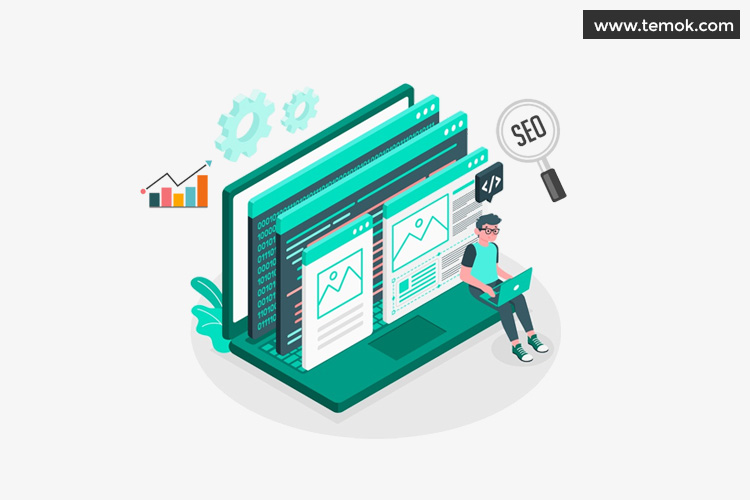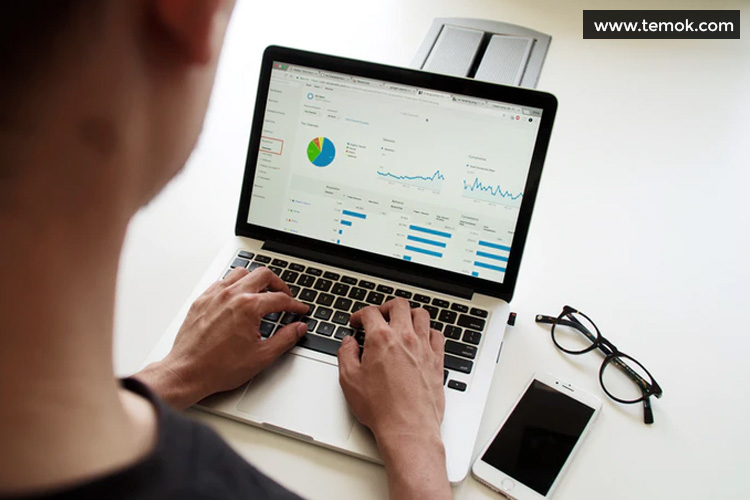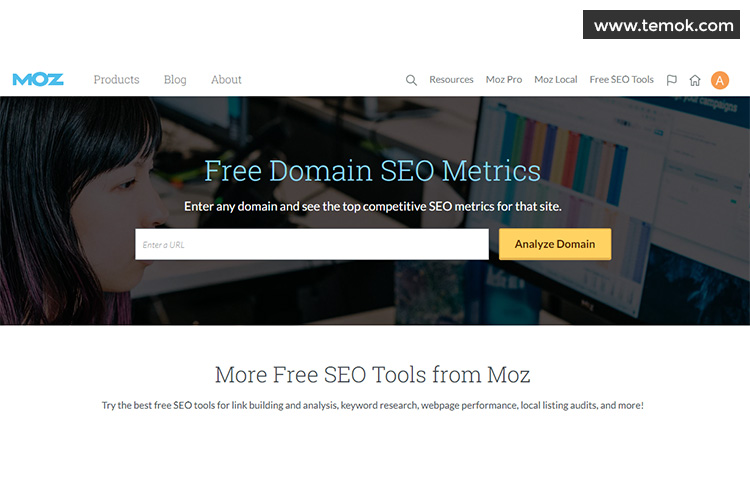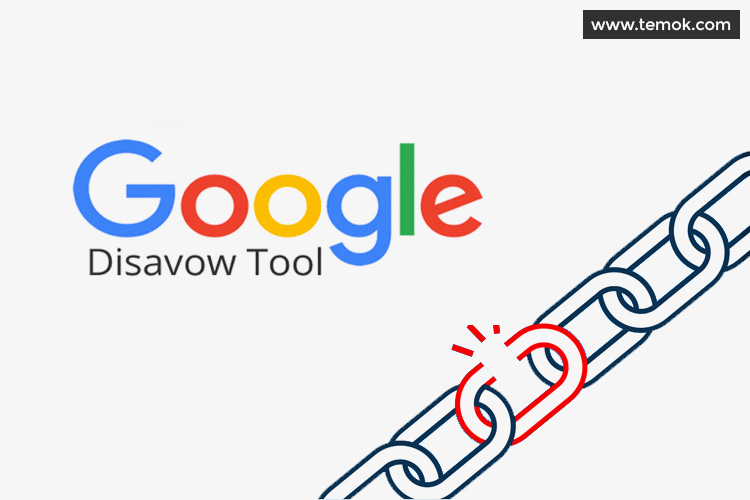If you have good knowledge of search engine optimization (SEO) then you can understand it is the most important for domain authority. The journey started in 1997 when Google introduced the page rank apart from other search engines. Page rank is the number of links and quality of links to any particular page.
In 2000, when Google introduced a toolbar to explore things with ease page rank was also displayed for every page and it is still part of Google’s overall algorithm. There are hundreds of different factors that are used by Google to determine the SEO ranking of any website. When Page rank disappears, SEO professionals need any grade or score (ranging from 0-100) to show their results.
Moz developed the domain authority to estimate how well a website will rank on search engines including Google. No one has an understanding of Google algorithms but they make estimations based on their observations. Domain authority (DA) becomes the standard and uses the number to indicate the authority of any website.
Before proceeding next you need to differentiate the DA from Page authority (PA). Page authority is also a metric that is used to measure the ranking strength of a single website instead of measuring the entire domain or subdomains.
Table of Contents
How Does Moz Analyze Domain Authority?
Moz uses over 40 factors to analyze the domain authority, but the following are the most important factors:
1. Linking Root Domains
The number of unique backlinks for your website from two different websites means you had only two linking root domains. So, try to get backlinks from different websites rather than getting many backlinks from a single website.
2. MozRank
It is the metric used to show the strength of external links on your website based on the quality of those links instead of the number of links. MozRank uses a 0-10 scale, where the average rating for any website is 3 out of 10.
3. MozTrust
It is similar to MozRank but it measures how closely your website is connected to trusted websites like .edu or .gov websites. If you got a link from a .edu or .gov site then it will be considered a sign of trust that helps to increase your MozTrust rating between 0-10.
4. Quality Content
Content is the main factor of search engine ranking and it is a factor in determining the domain authority. Once you have earned good domain authority scores your search engine ranking will also increase.
5. Social Signals
Google gives more importance to social signals to identify good-quality content. For example, if content is shared, liked, and commented on hundreds of times must have some quality. Moz also uses the same social signals to calculate the domain authority.
6. Search Engine Friendliness
Site structure can directly affect usability because poor site structure makes your website difficult to navigate, crawl, and index by different search engines which can hurt your rankings.
12 Realistic Techniques to Increase Your Domain Authority
1. Improve Your Off-Page SEO
Off-page SEO is a technique of getting backlinks by guest posting, social bookmarking, article submission, forum discussion local citation, etc. for your website. If your link profile is clean and strong then it will help you to boost your domain authority.

Your link profile is said to be strong if you take care of the following factors:
- Get Incoming links from high-DA websites
- Make sure you don’t have low-quality or bad links
- Incoming links should be from relevant websites
- Remove low-quality backlinks with the Google Disavow tool
- Participate in different forums and share your link
- Publish guest posts for referral traffic regularly
- Get links by a maximum number of unique domains
- Find broken links and replace them with working links
- Make sure you have listed in local business listing websites
- Get quality links by bookmarking websites with high DA
- Design your images for articles instead of copyrighted images
How to Make Your Link Profile Stronger?
The process of improving your link profile is known as link building or Off-page SEO. Analyze the bad or toxic links with any tool like Moz Explorer or Semrush and ask the website owners to either remove the link or devaluate it by giving the no-follow tag. The process of getting high-quality and good links from related websites is a tricky and challenging part of SEO. I am going to give an overview of link building, mainly there are two main ways to gain good links.
Natural Link Building
If you have unique and quality content on your website that will attract links from other websites is known as natural link building. It is a simple process that anyone visits your website if he finds your content valuable he will like it and link it to his articles. But keep in mind, that it is only possible if you have published link-worthy content. Natural link-building is a very beneficial process but you need to be patient because it takes time to get a maximum number of readers and few of them will share in their blogs.
Blogger Outreach
It is also a good way to get quality links by reaching out to other webmasters or relevant bloggers by sending them personalized emails. The main purpose of blogger outreach is to convince journalists or bloggers with good audiences to link to your website.
2. On-Page SEO Optimization
It is the technique used to optimize your web pages to improve search engine ranking and earn organic traffic. On-page SEO helps search engines understand your website and whether it is relevant to the searcher’s query or not.

Check the Following Factors Before Publishing the Content:
1. E-A-T
E-A-T (Expertise, Authoritativeness, and Trustworthiness) is a framework used to assess content creators, webpages, and websites by Google raters. Google makes sure that websites having high-quality content are rewarded with better ranking and websites having low quality should be less visible.
2. Heading Tags
Highlight the main points with heading tags (H1-H6) such as H1 for main headings, H2 for subheadings, and H3 for sub subheadings, etc to highlight the main points. Heading tags have a greater impact and make it easier to read and provide keyword-rich context about your content for search engines.
3. Keyword Density
It is the percentage of keyword stuffing and you should write your content with a maximum of 2% keyword density. You can also use a synonym to avoid keyword stuffing.
4. Proper Permalink
Make sure you are using your primary keyword within the permalink of your onsite articles.
5. Meta Title and Description
It is necessary to add focused keywords in the Meta title and description. Write your title more attractive and include a focused keyword. Moreover, you should write your title 50-60 characters long and meta description from 150-160 characters.
6. Image Optimization
Use optimized images for your blogs and use ALT tags. It has many other benefits, such as it will show on Google image searches, better user experience, and reduced page load speeds.
7. XML Sitemap
Get registered on the Google webmaster tool and Google Analytics. Now create an XML sitemap and submit it on the Google webmaster tool.
8. SSL Certificate
Don’t forget to use an SSL certificate and redirect your website from HTTP to HTTPS.
9. Structured Data
Use structured data that is a standardized format to mark up information about your webpage. It helps search engines like Google, Bing, and others to understand the context of your content and serve for appropriate search queries.
10. Breadcrumb Menu
Add a breadcrumb menu bar in the header of all blogs that will act as a secondary navigation menu that will help the users track their path from the page they are currently reading to the home page.
11. Robots.txt
Check your robots.txt file and make sure Google crawled your webpage without problems.
3. Improve Your Technical SEO

If you are using the correct technical SEO from the beginning then there is no need to deal with it again. Keep in mind, if the technical SEO of your website is not correct then it can have a great impact on your domain authority.
You should check the following things:
- Register with Bing Webmaster Tools and Google Search Console
- Create, optimize, and submit your XML sitemap to Google
- Make sure the robots.txt settings are so that Google and other search engine spiders can crawl your website without facing any issues.
- Migrate your website from HTTP to HTTPS
- Add structured data (schema) information for the understanding of the context
- You have properly defined the breadcrumb menu on all web pages
- If you have a multilingual website then don’t forget to use hreflang
4. Make Sure Your Website is Mobile Friendly

Nowadays, billions of users are browsing the internet using their mobile devices. So, your website must have a mobile-friendly layout to improve the Domain Authority score. A mobile-friendly website provides a positive user experience and increases the ranking in search engines. If you don’t have a mobile responsive website then it will not properly be displayed on the mobile devices and hurt your search engine ranking. If you don’t have proper information about making your website mobile-friendly then there is no need to worry, follow 12 instructions and remove these issues.
Once you have made your website mobile-friendly then it is necessary to check on different mobile devices or test using Google’s mobile-friendly test. This tool will provide information about your mobile-friendliness with the screenshots.
5. Improve Your Page Speed

If you have poor page loading speed then it will increase the bounce rate which affects your domain authority. In this world full of hurry, most people will leave your website if it takes a long time to load. The website having fast loading speed not only helps to increase your Domain Authority score but also helps to get leads, signups, and sales.
Check your website loading for both desktop and mobile using Google’s PageSpeed. Moreover, it will also give suggestions to improve the loading speed. If you can do it by yourself then well and good but if you can’t you should hire a developer to fix website speed issues. If you have some technical knowledge then follow these steps to fix:
- If you are using the WordPress platform then use the WordPress latest version, and update the theme, and plugins to the latest versions.
- Delete or deactivate unnecessary plugins.
- Upgrade your server or contact your hosting provider to improve the server’s performance.
- Use any cache plugin like w3total
- Compress your images and use CDN for CSS, JS, and images.
- If you need to add any streaming or video then use YouTube services
6. Increase Your Social Signals

Social signals mean interactions on social media platforms. People sharing or tweeting your URL or social posts can increase your brand reputation and website traffic. Keep in mind, that social signals are not used in the Google algorithm but all websites having top ranking and domain authority have good likes, shares, tweets, etc. If you don’t have social media accounts then create accounts on all popular social media platforms.
When you will share blog posts, users will like, follow, and share their comments. You can also provide social share buttons on all blogs so that anyone can share on social media if they find it useful. Schedule your posts, use relevant hashtags, and adopt 44 impressive ways to grow your business overnight.
7. Moz Domain Authority Tool

You have done a lot of things to increase your domain authority and page authority. It’s time to measure the effectiveness of your work with any domain authority checker. We are going to use the Moz domain authority tool which is free to use and shows the DA score.
You can also use their link explorer to get more detailed information. To use it, create a Moz account and enjoy 10 free lookups a month. Moreover, Moz provides a pro plan that is a pricey service, but it provides you with a lot more than what we are talking about here.
You can also use the Moz toolbar Chrome browser extension to view the Moz Domain Authority score for every site that you visit. When you use the link explorer you will get a lot of information but we are going to focus on, Domain Authority, Linking Domains, Inbound Links, and Ranking Keywords.

- Domain Authority
Keep in mind, that the domain authority score (in the case of Google it is 100) shown in the picture is the website’s expected performance in Google search results (SERP). This score changes from time to time even if you are not changing things. These scores are based on algorithmic calculations. It is easier to jump from 10 to 20 as compared to raising scores from 80 to 90. Remember, it is difficult to change the higher domain authority websites.
- Linking Domains
This is the number of links to your website from other domains. I have told you to increase the number of linking domains, here you can see those results. According to our screenshot, Google has 12 million linking domains where 555.4k domains were discovered in the last 60 days and 346.7k links lost in the last 60 days.
- Inbound Links
Inbound links are the number of pages linking to your website where multiple links from a single page are considered as one inbound link. Usually, it is more than the linking domain number. Google has 13.6 billion inbound links.
- Ranking Keywords
Total number of keywords ranking in the top 50 positions on Google. It increases the chance of being found on the first five pages of SERP. Google has 33 million ranking keywords.
8. Be Patient And Let Your Domain Grow Old

The domain age also increases your domain authority because search engines understand that the website is still active for 4 years and quality content is published on it at regular time intervals, so it is not a spam site. If your website is one or two months old then there is no need to worry about it, just keep publishing quality content and your domain authority will increase as time passes.
9. Increase Your Publishing Frequency

Most of the bloggers need to know the publishing frequency of their blog posts. Publishing your blogs regularly increases the domain authority. From time to time you see fluctuations in domain authority due to inconsistent blogging. To get a higher domain authority you should increase the blog publishing frequency. The more you publish higher you will get traffic to your website.
Advantages of publishing regularly:
- Higher domain authority, SEO ranks, higher PA and revenue
- You can increase the interlinking of blog posts
- Maximum social media shares
- Writing skills will be an increase
- You will gain readers’ trust
10. Publish Quality Content

Build a great strategy for creating unique and approachable content that will get value from anywhere. The uniqueness of content matters more than the length of the content. You know, content attracts visitors but these days you need to use visual content because a single picture or video can attractively describe a paragraph of words. Nowadays, infographics go viral within a record period, so try to use content that goes viral.
Strictly follow these things:
- Do not copy content from any website and past it into your blog
- Use synonyms and try to avoid repeating the words again and again
- Follow your topic, don’t describe unnecessary things
11. Disavow Bad And Toxic Links

It is also necessary to remove the toxic or bad links regularly that are affecting your ranking on search engines. As quality backlinks can increase your brand reputation and domain authority, bad or spammy links can decrease your ranking. Keep your link profile clean and analyze bad links continuously. Bas links have a direct impact on your domain authority, so use Google’s disavow tool to tell the search engines to ignore these particular links.
12. Guest Posting or Guest Blogging

Guest blogging or Guest posting helps to drive referral traffic and increase the brand reputation. You get new users with this advantageous method of backlinking instead of commenting. It is the most popular link-building strategy and is used by many webmasters to increase their website domain authority. You should understand the domain authority before submitting any guest blog to avoid low-quality backlinks. Add social media profiles in the author bio and try to post in your relevant niche.
Final Words
All methods, I have discussed in this article are valid, realistic, and very important to increase your domain authority. A website having no SEO is rarely found in the SERP results, so follow these techniques to increase your domain authority and organic traffic. Try to think of a big picture, your website is purposeless if you don’t get solid rankings in Google and other search engines.

Hammad Mohsin
Domain authority is a way of predicting how well a website will rank on search engines. The official term and algorithmic score were invented by the good folks at Moz.
Jatin
Great stuff right here! How long does it take more or less for new website to rank provided I follow these tips?
Maruf Hasan
Really amazing and realistic blog. It will be very much helpful for newbies.